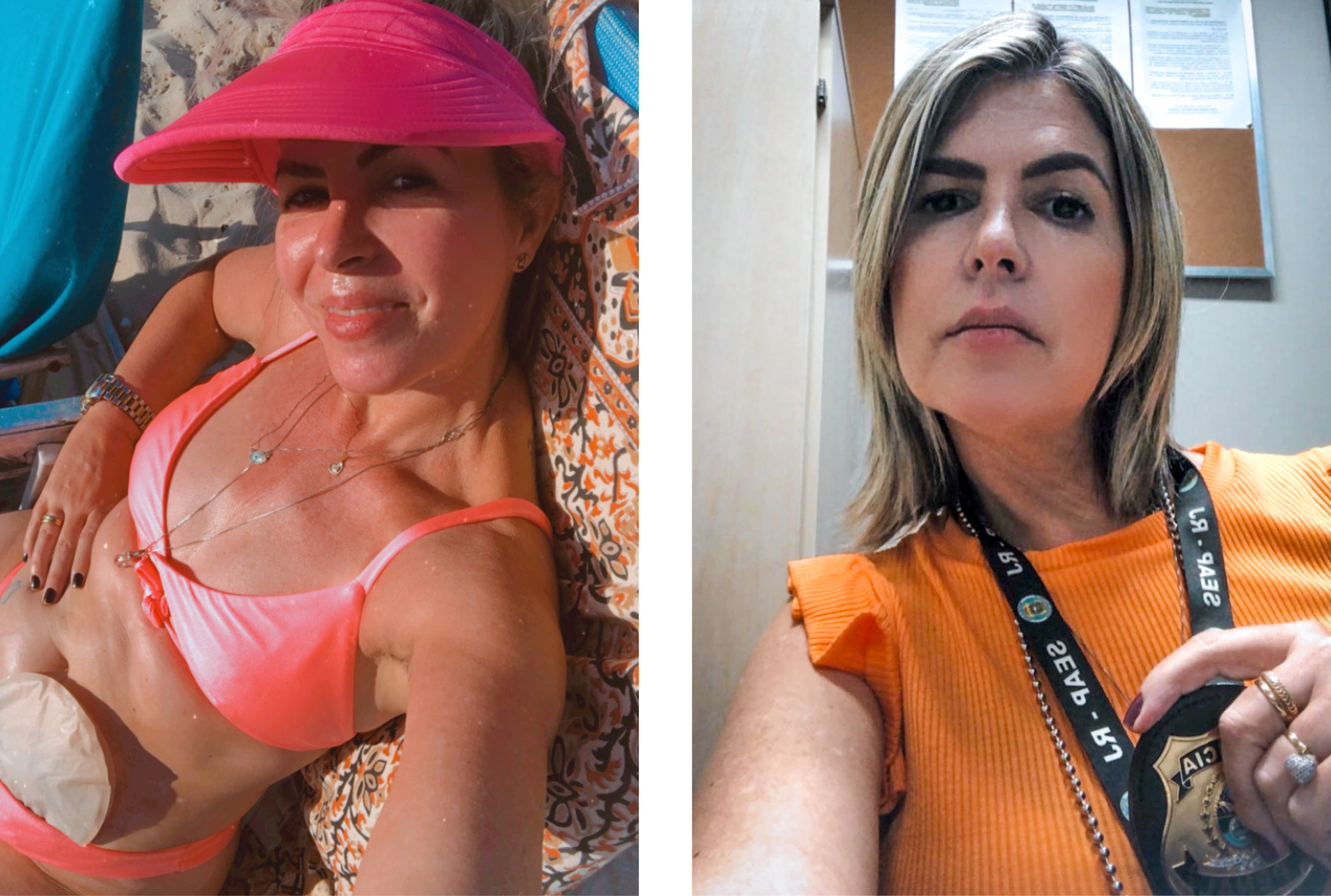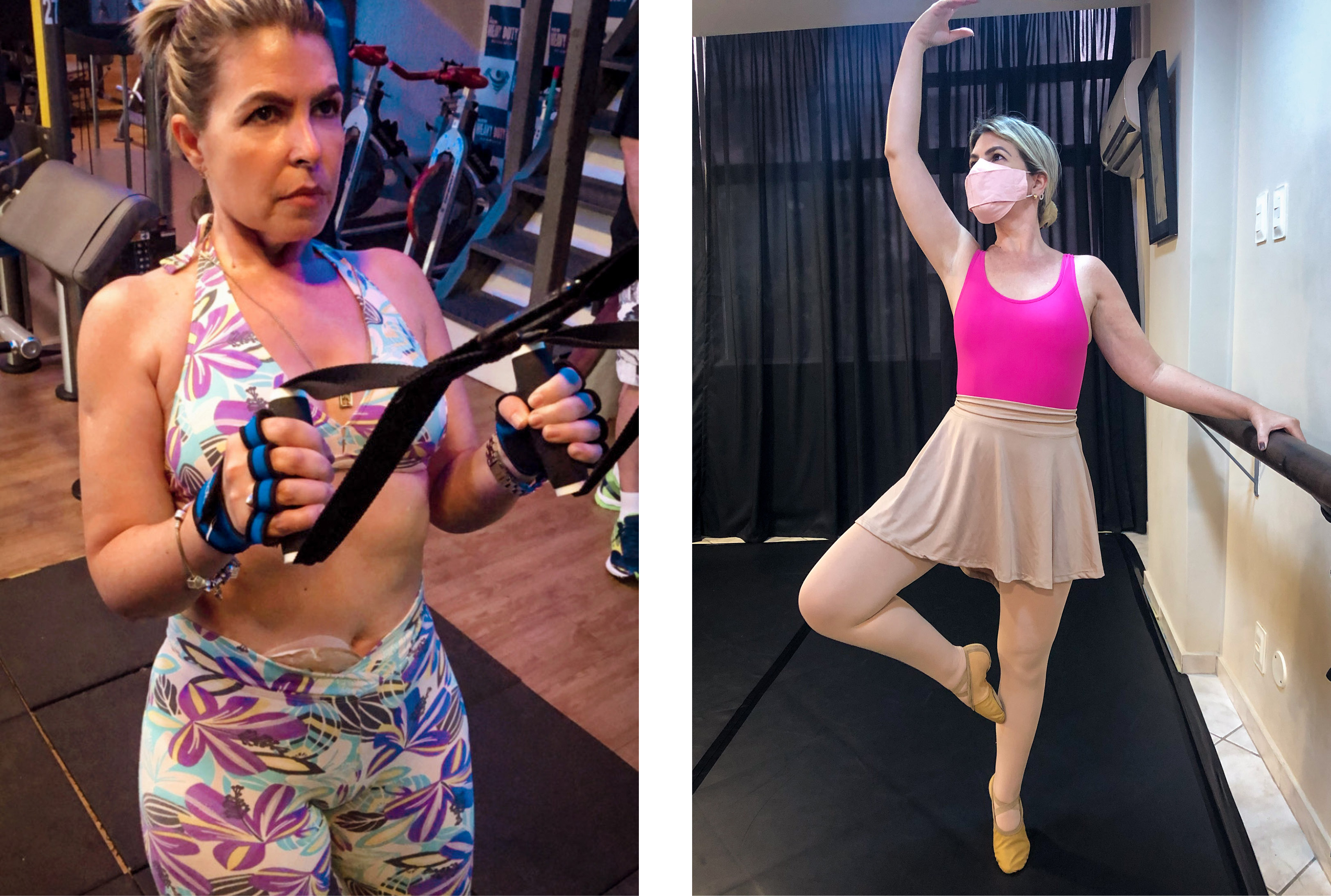My name is Juliana. I am a police officer, a mother and a sometime dancer, and I have Crohn’s disease and an ileostomy.
First flare
I have been fighting the symptoms of Crohn’s disease since my first flare and diagnosis in 2017. This autoimmune condition can cause painful inflammation throughout the gastrointestinal tract. At present, there is no cure. From diagnosis, I have tried to control the symptoms with a variety of different drugs, from corticosteroids and immunosuppressants to antibiotics and biological infusions.
For a while, this has not always been successful, and disease activity caused me a few unpleasant complications, including sepsis, a perianal abscess and deep vein thrombosis. I underwent blood transfusions, CTI scans and several more invasive tests. A few times, I almost left and ‘came back’ at short intervals.
However, something eventually went right. My disease went into remission, with no symptoms, and stayed there for a year and a half in remission. I was feeling great; I could live a normal life.
Pandemic panic
Around the same time the terrible COVID-19 pandemic arrived in Brazil, I started having the same symptoms as the first flare up. I was expelling mucus and bleeding non-stop, and I was losing weight and exhausted. However, I kept on working, sometimes wearing a diaper to keep up with the routine. This became a little easier when I started working from home.
However, after 2 months, I received surprising news from my gastroenterologist. I was not showing a clinical response to the biologic medication, and so I would have to be hospitalised and again think about changing to another biologic.
A few days after I was admitted for treatment, I contracted COVID-19 inside the hospital. I was especially vulnerable to the virus, as Crohn’s disease and its treatments had already weakened my immune system. Worse still, the medication available for controlling COVID-19 was not thought to be safe for people with Crohn’s disease. It took 30 days and four PCR tests before the virus was out of my system.
Like the living dead
At last, I could focus on treating the disease I came in for. At that point, I had been bleeding non-stop for 48 days, and I was on various antibiotics. I had lost 17kg, because I hadn’t been eating, with no sense of taste and constant nausea, vomiting and fainting. Instead, I was given nutrition through a tube, either enterally (through the nose into the stomach) or parenterally (straight into the bloodstream).
Eventually, I was well enough to return home, but only just. I felt like the living dead, without strength for anything. For the next 5 months, things didn’t get much better. I still wasn’t responding to the second biologic, even at an optimised dose.
My gastroenterologist decided I needed to be hospitalised once more. I was reluctant to go; I was in a hospital panic, but there was no way to avoid it. I started all over again: steroids, antibiotics and enteral feeding, with abscesses and a peripherally inserted central catheter (PICC) in my arm.
Deciding to live
Something in my colon was very wrong, so the hospital team investigated with a flexible camera, in a procedure known as a rectosigmoidoscopy. This revealed large masses blocking movement through my intestine. The first thought was that these were large polyps – outgrowths of the intestinal wall. However, on closer inspection, these masses turned out to be hardened, impacted stool caused by a narrowing of the intestine known as stenosis or stricture.
At that moment, there were two alternatives. I could try my luck counterattacking with a third biologic and hope for the best, or I could have surgery to remove the diseased part of the intestine, which included all of the large intestine and half of the rectum. I decided to live, and so I decided on the surgery.
Part of me
On 5 October 2020, I left the operating room without one organ, but I had gained another: my ileostomy. I had the famous external pouch. That’s right, for now, my gut works through a bag on my belly.
I went through fear, panic and denial about it before I even had the surgery. After, I didn’t even have the courage to look at the bag at first; I thought I was just going to cry. However, this was just a momentary wobble.
It didn’t take long for a stronger, kinder force to change everything in an instant. From the first day, I already felt an improvement and a return to life. On the second, I had already changed my own bag by myself. I was perfectly content with my stoma as a part of my body, and I gave her the name Glorinha.
Clarity of mission
On Glorinha’s first birthday last October, I could look back and say for certain that surgery was the best thing that happened to me in 2020.
I was determined to take on life’s challenges as best I could, without psychological hang-ups or feeling held back by my stoma. Even if it is classified by law as a physical disability, I haven’t had to change my life to accommodate my ostomy. I’ve adapted it into to my routine, with some precautions, but without any real deprivations.
I am convinced that nothing in our existence happens in vain, and this gives me total clarity of my mission in the face of everything. I have had the privilege of access to the best treatments and specialist care, and I am committed to helping other people receive what I have. I don’t see myself as a warrior, martyr or anything like that – not even a ‘poor thing’.
The simple things
Since my surgery, I have been able to do all those simple commonplace things that most of the time we take for granted. At first, I wanted to eat everything I saw in front of me, and soon I got my hair cut and dyed and nails done.
I started exercising again, which began with going for a walk with my daughter, and now in my spare time I train with weights, dance classical ballet and enjoy trips to the beach and traveling. I still wear the same clothes, whether or not they leave my bag on display, and I feel good joining my friends at the beach or club in a bikini.
My greatest reconquest of the past few years has been, after 2 years on sick leave, going back to work in the profession I love, criminal policing. In the following months, I’ve faced new challenges and had new professional achievements. Going back to work has been fundamental in redoubling my self-esteem and sense of security, giving me the confidence to believe that I am still an active woman, fit for work and life.
Most importantly, I have at last been able to see my family and be with my 9-year-old daughter Maria Fernanda. I can take care of her, follow her growth and be her mother to the fullest.
 At the beach and at work
At the beach and at work
Proud
Today I am very proud of the woman I have become. I feel beautiful and happy, and I accept myself for who I am!

At the gym and on the dancefloor
Juliana Simões is a police officer who lives in Brazil with her daughter
julianavabsimoes@gmail.com

